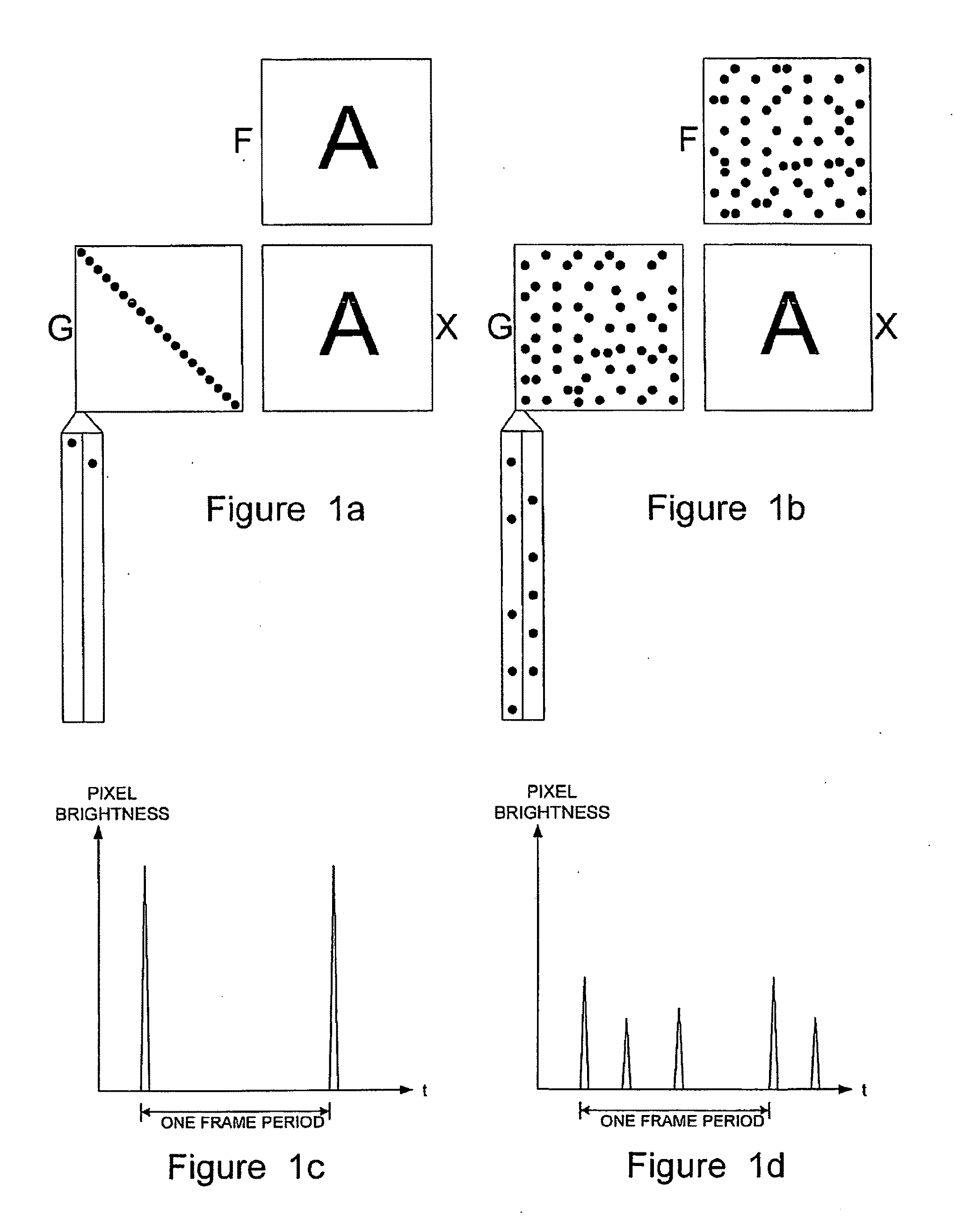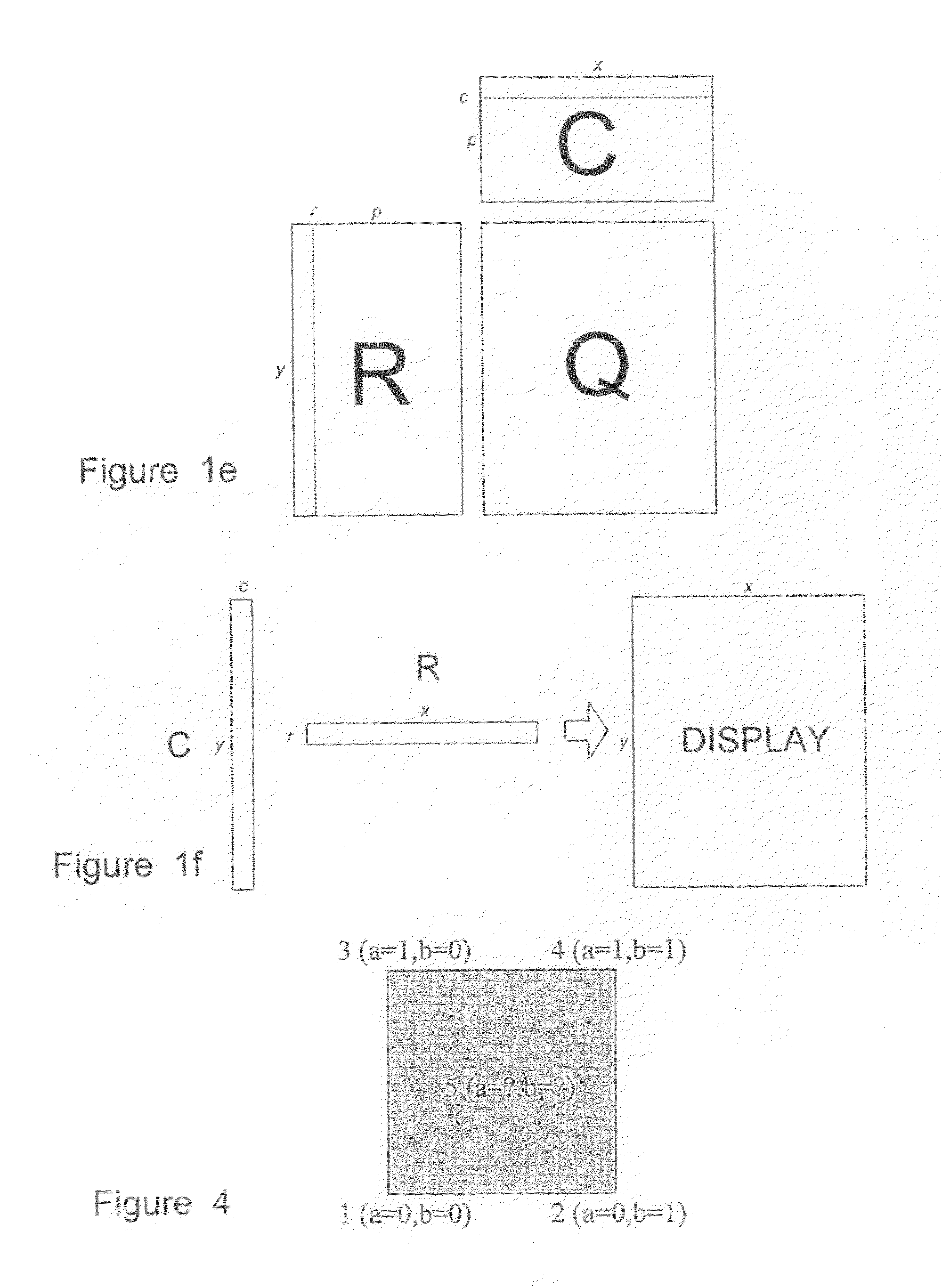Image Processing Systems
a technology of image processing and image, applied in the field of image processing systems, to achieve the effect of optimizing the benefits of tma driving, reducing peak and typical luminance, and more efficient operation
- Summary
- Abstract
- Description
- Claims
- Application Information
AI Technical Summary
Benefits of technology
Problems solved by technology
Method used
Image
Examples
Embodiment Construction
of Post-Processing Calculations
[0066]We will first give the calculations employed, and then the reasoning behind them.
[0067]For each sub-frame p calculate:
Cpmax=max(Cpx) over all x, (1)
Rpmax=max(Rpy) over all y, (2)
and, for a colour display,
Cpsum=Ired∑x=0,3,6…357Cpx+Igreen∑x=1,4,7…358Cpx+Iblue∑x=2,5,8…359Cpx29(3)
where Ired, Igreen, and Iblue are the relative (reference) drive levels of the red, green and blue pixels (10-bit values) compared to a nominal reference of, in this example, 29.
[0068]The aim in this example is to minimise the pixel luminances and therefore duration of each sub-frame is proportional to RmaxCmax (the luminance of the brightest pixel). Thus we calculate the sum:
T=∑pCpmaxRpmax(4)
[0069]The PWM clock period for a sub-frame, tp is given by:
tp=220CpmaxT(5)
[0070]The minimum value of Rmax×tp is 1024; the maximum value is 220−1. Where Rmax×tp is less than 512 tp should be rounded to zero; where it is between 512 and 1024 tp should be rounded up such that Rmax×tp equ...
PUM
 Login to View More
Login to View More Abstract
Description
Claims
Application Information
 Login to View More
Login to View More - R&D
- Intellectual Property
- Life Sciences
- Materials
- Tech Scout
- Unparalleled Data Quality
- Higher Quality Content
- 60% Fewer Hallucinations
Browse by: Latest US Patents, China's latest patents, Technical Efficacy Thesaurus, Application Domain, Technology Topic, Popular Technical Reports.
© 2025 PatSnap. All rights reserved.Legal|Privacy policy|Modern Slavery Act Transparency Statement|Sitemap|About US| Contact US: help@patsnap.com



